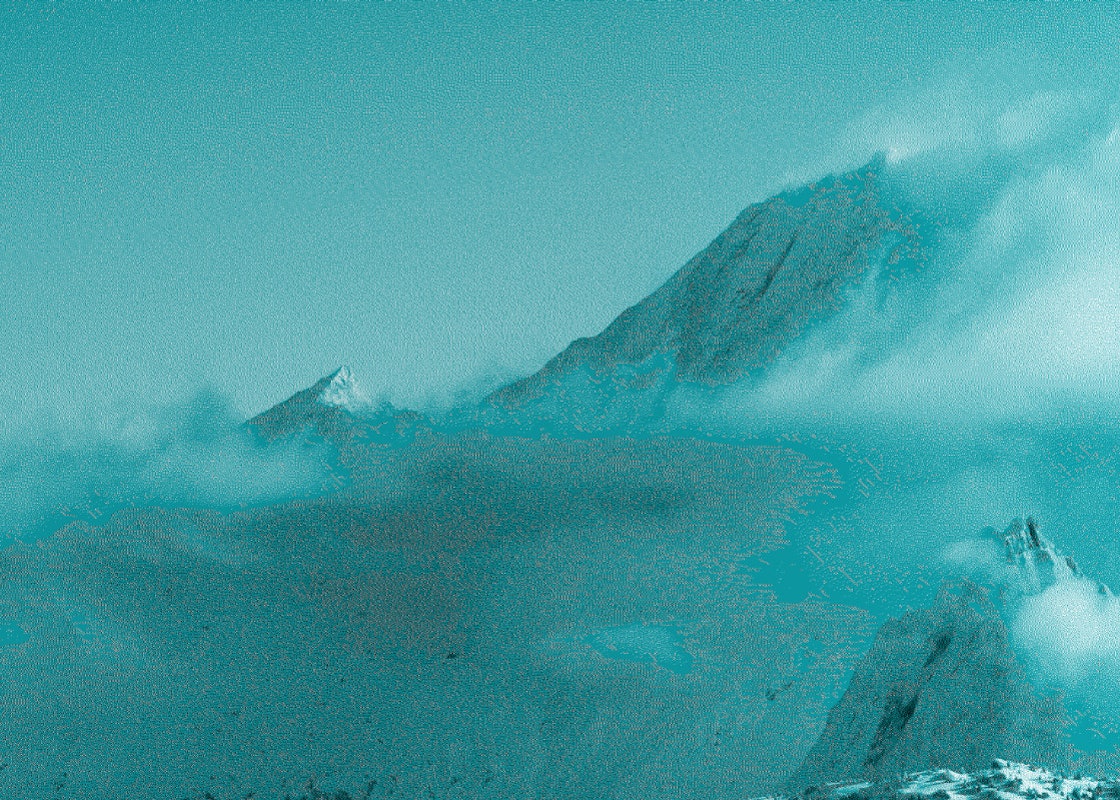
The Vanoise National Parkwith Maxime, park guard
Maxime, park ranger at the Parc National de la Vanoise in Méribel
Start a conversation with him and you'll soon find yourself immersed in the details of the hectic lives of the ibex, the singing parades of the black grouse or the coat changes of the rock ptarmigan, without realizing at the end of the conversation that you've just spent 1 hour enthralled by these captivating stories!
Having worked at the Parc National de la Vanoise for 5 years and recently joined the S3V teams, we wanted to share his background, experience and incredible knowledge with you, and we took the opportunity to ask him for advice on where to go to spot the finest specimens in our valleys.
Presentation & career path
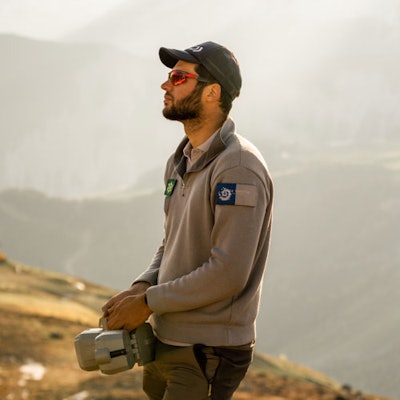
A short presentation of this enthusiast
My name is Maxime, I'm 27 and I'm originally from the Ardèche region. I moved to Savoie 9 years ago to study biology and ecology in Chambéry, then went on to do a master's degree in mountain ecology research. Today I specialize in the behavioral study of mountain species for the Vanoise National Park.
As for my passions, I love nature, climbing, mountaineering, ski touring: in short, anything to do with the outdoors! I'm also a no-kill fly-fisherman.
How long have you been working for the Parc de la Vanoise, and how did the story begin?
I've been working at the Parc de la Vanoise for 5 years, but not full time, as I've had several different jobs. I started off as a bachelor's intern with a study of ibex monitoring, then as a master's 1 intern with a study of black grouse habitats in the ski area ecosystem, and as a master's 2 intern with a study of grouse behavior in this particular ski area context. I then did a civic service at the park, working for 6 months on the avifauna plan, studying local birds, then on a fixed-term contract as a summer reinforcement guard and finally today on this 18-month fixed-term contract as a guard and organizer.
Since January 2024, I've also been working for S3V as a biodiversity coordinator. I therefore divide my time between the missions entrusted to me by the Park and those I carry out for S3V.
His missions within the Vanoise National Park
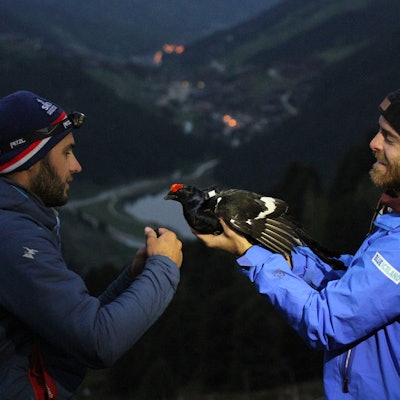
What does your day look like at different times of the year?
Captures:
For the Parc de la Vanoise, I prepare, organize and carry out animal captures, with the aim of marking them (collars, earrings) and taking measurements. This enables us to monitor the population and the health of the species.
The aim of these captures is to gain a better understanding of the species with which we share the mountains, so that we can better preserve their breeding grounds, song zones, travel routes or living quarters.
This activity is driven by seasonality, as we are constrained by their life rhythms. For example, we mark golden eagles, foxes, hinds and mountain hares in winter, and black grouse and ptarmigan in spring.
Events:
I also organize events targeting several audiences: in-house staff, socio-professionals, the general public via more or less scientific conferences and I also organize events at meeting points, in summer at the refuge du saut every Thursday afternoon, in winter every Wednesday on the ski area. All this is done with a multitude of materials: horns, animal footprints, GPS tracking maps, etc.
I'm as transparent as possible during these exchanges, because it's only by knowing the species better that we can avoid bad practices as much as possible!
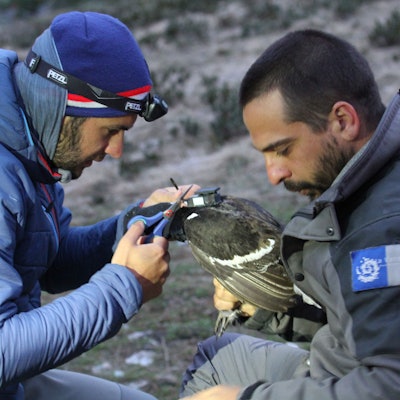
How do these marker catches work?
In all cases, we use as few chemicals as possible, i.e. we avoid anaesthetics and do everything we can to reduce their stress, by being as calm and efficient as possible.
Installed GPS chips are always less than 5% of the animal's total weight, to be as unobtrusive as possible. Even if some of the larger animals look like Christmas trees, with their large markings, which also enable us to recognize them from a distance and disturb them less (deer, for example), there has never been a case of injury or mortality due to the fitting of the collars.
During captures, a minimum of 3-4 banders are needed, with advanced skills and knowledge to be quick and calm: if the bander is stressed, the animal will feel it immediately.
For black grouse, for example, regardless of the weather, a 20m net is deployed in the early hours of the morning (4am-5am) at the breeding grounds. Once caught in the net, the grouse's head is covered with a kind of sock to keep it in the dark, thus significantly reducing stress. The tag is then applied, a few measurements are taken and the bird is released.
It has happened that 30 minutes after releasing a grouse in a singing area following a marking, it has returned to the net. That's a sign that it wasn't too disturbed!
For the ibex, cages are installed on rocky bars. The ibex is attracted by the salt in the cage, and once inside, the motion detection camera triggers the cage to close on our command. It is of course possible to close the cage only when it contains an animal that has already been tagged. Once inside, the eyes are covered with the famous socks, and the legs are blocked. Blood is then drawn, horns measured, waist and leg measurements taken, and the animals marked before being released.
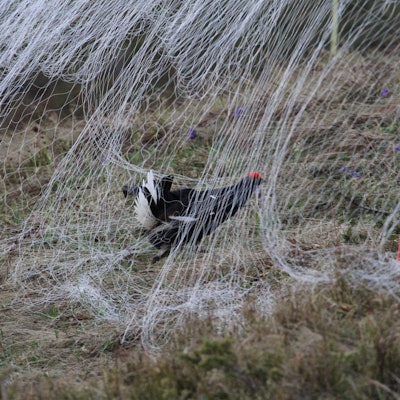
What have you learned from these marking captures?
We've learned more about the movements of black grouse in 7 years of study than we have in the last 50 years, which is why it's important to monitor them, even if the method seems intrusive.
In 7 years, we've tagged more than 200 grouse, confirming the idea that their refuge areas can be on developed land or in natural areas, but often on tight plantations or cliffs with no skiers. In other words, areas where skiers never or only rarely pass. Grouse do, however, visit ski areas, particularly during the breeding season, at dawn in spring: they will sing on the ski slopes, as these are open areas. Hence the importance of preserving and duplicating these refuge areas where skiing is prohibited.
We have also been able to study that their winter activation strategy is very limited: they go out a little in the morning, a little in the evening to feed, outside the ski area's opening hours. The more they are disturbed, the more they need to feed and move around, and the more tired they become.
Focus on Meribel's wildlife
What 3 characteristics do you most admire in animals?
It's hard to choose, because everything in nature is incredible!
Ibex hooves: the underside of the hooves is split, with no membranes between the two parts but with two anti-slip pads, giving it incredible mobility. It's as if the ibex had 8 hooves and was wearing 8 climbing shoes, and could climb 6C without tipping...
The characteristic coat of the rock ptarmigan: on its hare-like legs, the feathers go all the way down to the nails. No part of the skin is protected, enabling it to live in extreme conditions. All feathers are divided into two parts, a "normal" feather and a downy undercoat called the hyporachis, which further protects it from the cold. This characteristic is present in all mountain galliformes.
The power of eagles:
When I catch eagles, I'm always amazed at the strength in their legs. I weigh 90kg, the eagle is 4kg, but when he decides to move his legs, I can't stop him. I hold them and don't let go, but I have to take a step forward to stop him flying away.
Which animal fascinates you the most, the one you admire the most?
The ptarmigan! It's a unique bird, living in extreme conditions in the very highest mountains, between 2600m and 3600m. We noted that one ptarmigan had spent over a month on the summit of the Aiguille de Peclet, at an altitude of 3500m! It's incredible to be able to live in such a high-altitude environment, feeding only on lichen found on the rocks.
I also admire their self-confidence, as they think they'll go unnoticed under their coat, which turns out to be a highly effective camouflage: they have 3 types of coat, including one specially adapted to the mix of snow and rock, ideal for the autumn and spring periods.
Unfortunately, this is also what will lead to its disappearance from our mountains, as climate change is happening too fast and they won't have time to adapt to this change to adapt their dress. They will therefore be less well camouflaged and more visible to predators. It should be noted that although the ptarmigan is doomed to disappear from the Alps, it is not in danger of extinction, as it is very present in countries around the Arctic Circle.
Capturing ptarmigan is very complex: we haven't caught any this year, they're easy to miss and their habitat is very austere.
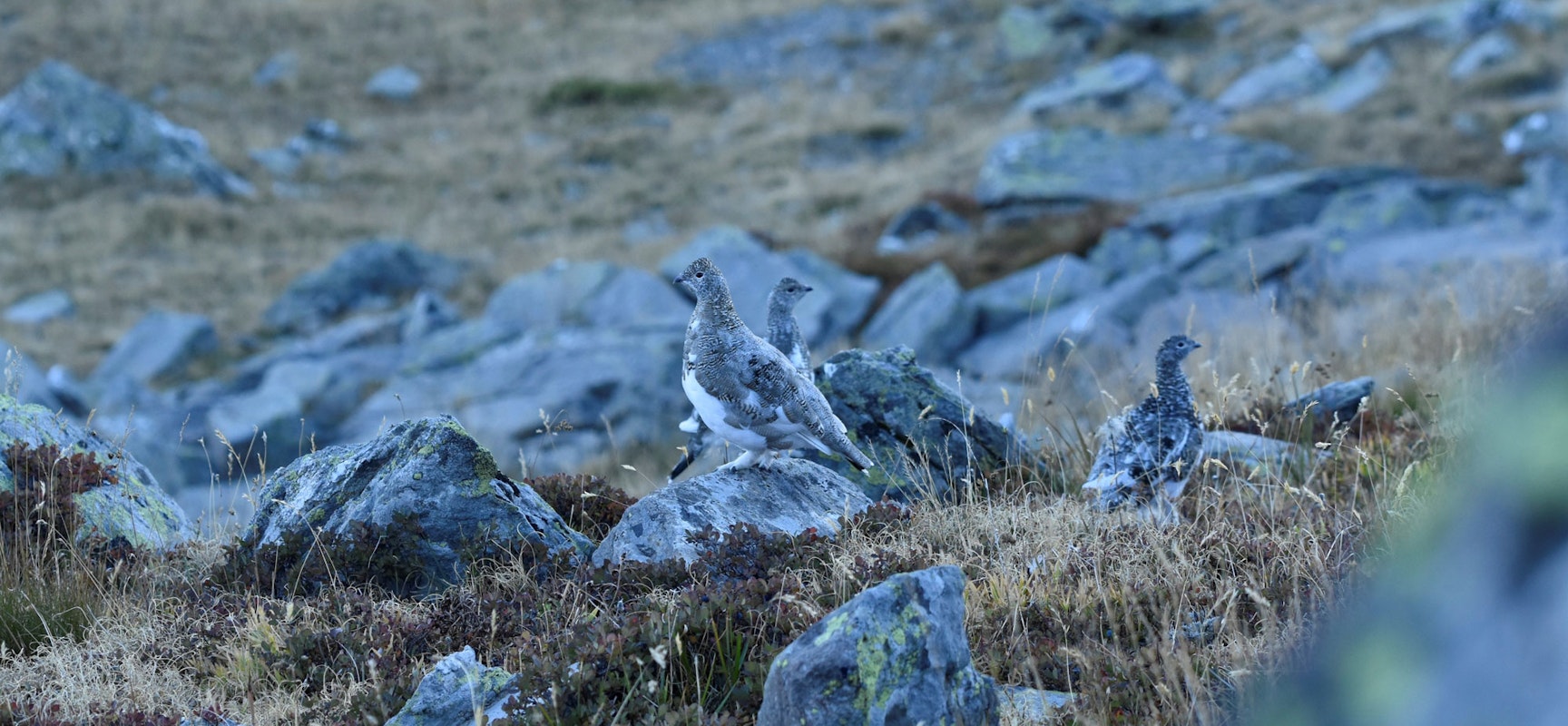
Maxime's best spots in Méribel
What spots would you recommend for those who want to see the local wildlife from afar?
You've already got to get up early!
For ibexes, I recommend the Lacs Mont Coua, the Gebroulaz moraines or the Col du souffre, which is a very popular spot for this species, even THE hot spot for ibexes.
Eagles can be seen around the Tueda reserve, towards the Aiguille du Fruit and as far as the refuge du Saut. They can also be seen around the Dent du Villard in Courchevel, or in the Vallée des Encombres in Belleville. Since they need thermals to fly, there's less need to get up early, but remember to look up frequently when the heat is on and when the marmots whistle loudly once.
For grouse, observations are made during the singing season, in May, at all the sites surveyed, which I'll let you discover for yourself!
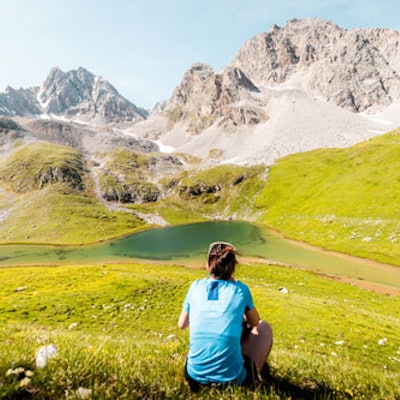
Your 3 favorite spots in the mountains, in the park or nearby?
Once again, in Méribel it's the Mont Coua lakes up to the Col des Fonds, which joins Chavière.
In Courchevel, the Lac du Rateau, even prettier than the Lacs Merlets in my opinion, because it's blue-green, almost turquoise, in a magnificent cirque at the foot of the Aiguilles du Rateau. And bivouacs are permitted here, as it's outside the park, provided you respect the environment.
In winter? Always Lacs Mont Coua (laughs). Ski touring.
Otherwise, on the ski area, Mont Vallon for the incredible view of the glaciers and my summer office!
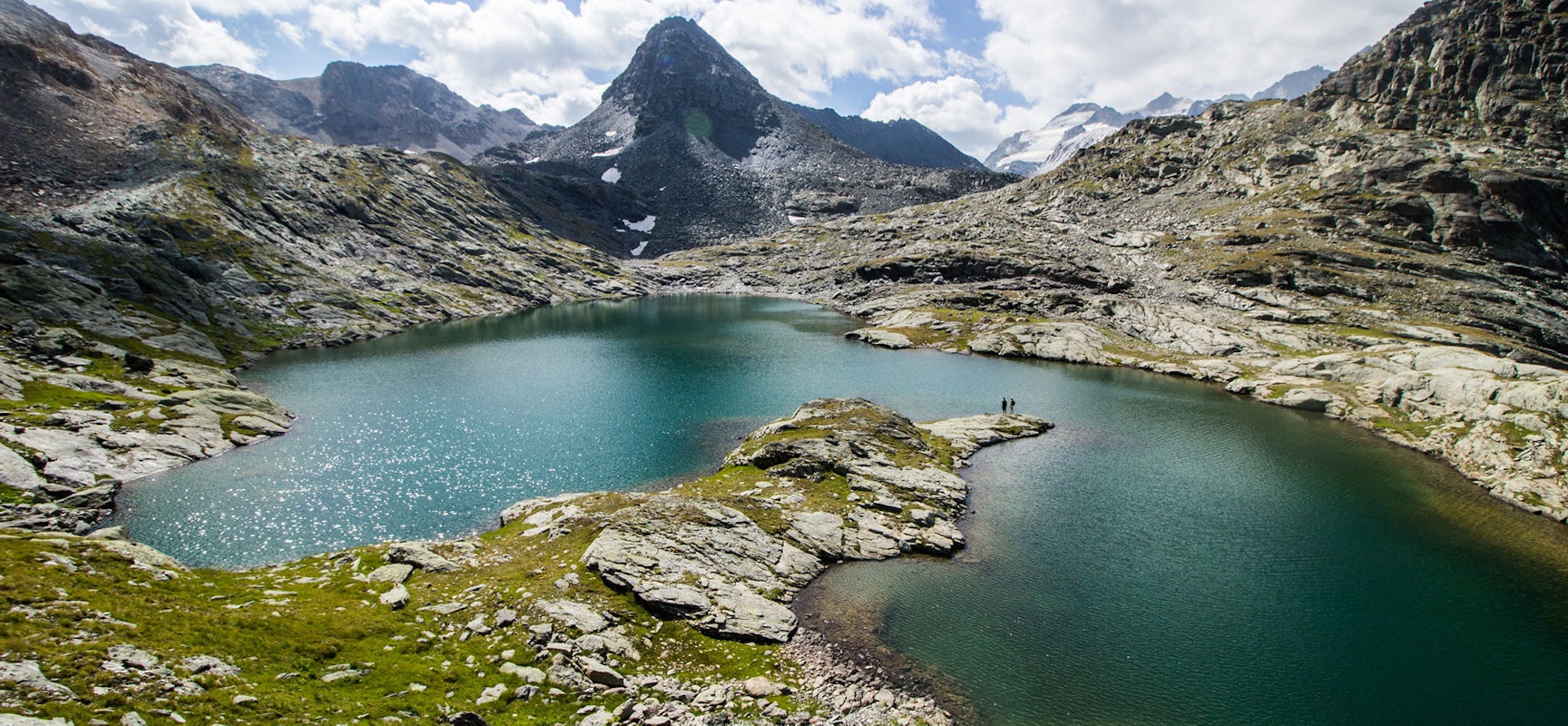
All concerned
What can we do as visitors to limit our impact in the park and more generally when hiking in the mountains?
1. Stay on the trails: this is essential. Wandering off-trail leaves a trail of scents. This is even truer with dogs, who without leashes can find and destroy the eggs of species and leave predator scents on all areas usually frequented by local wildlife. They also carry diseases. So it's very important to keep dogs on leashes in the mountains, even outside the Park! In the park, they are forbidden.
2. Don't leave any food or other waste: wild animals don't need to be fed, nature is very good at regulating itself.
3. Don't pick flowers: leave nature as you found it when you arrived.


